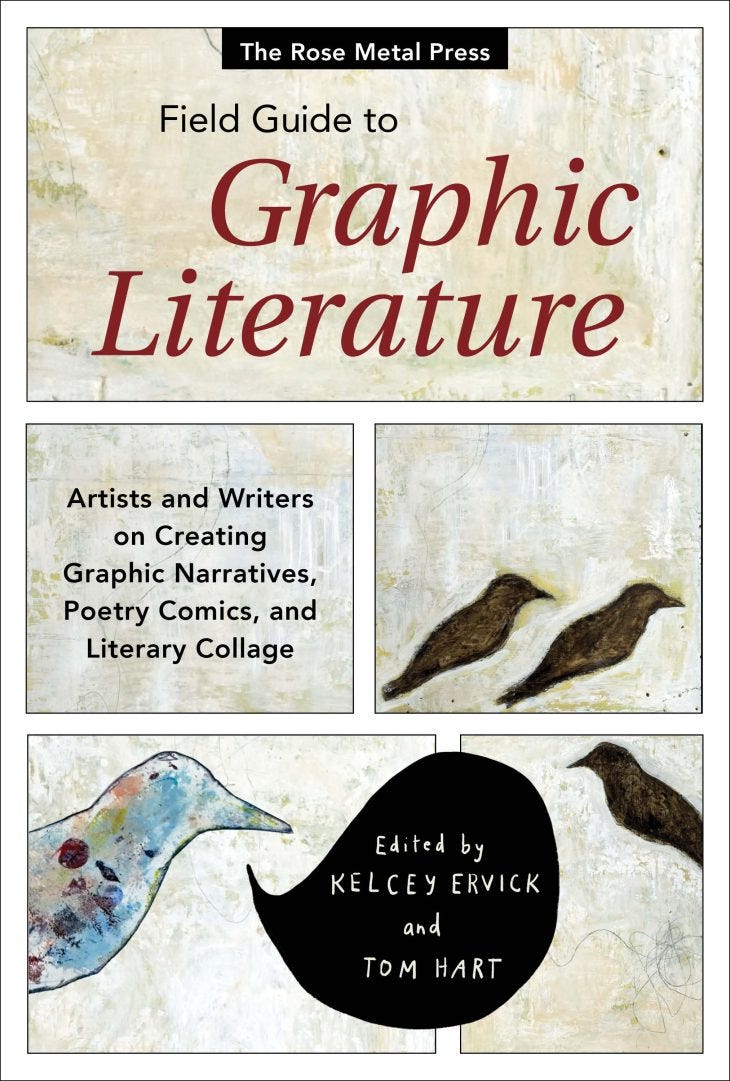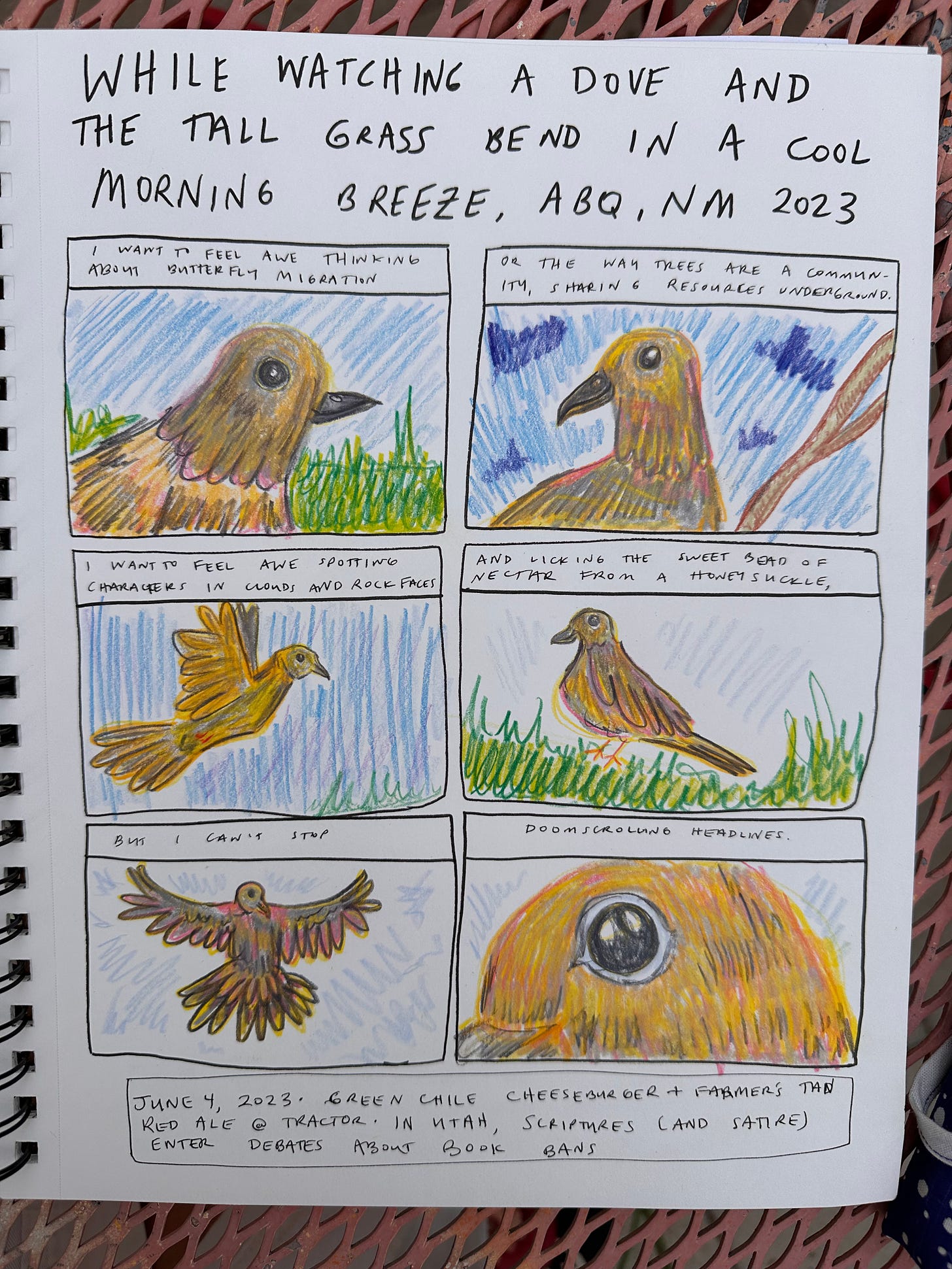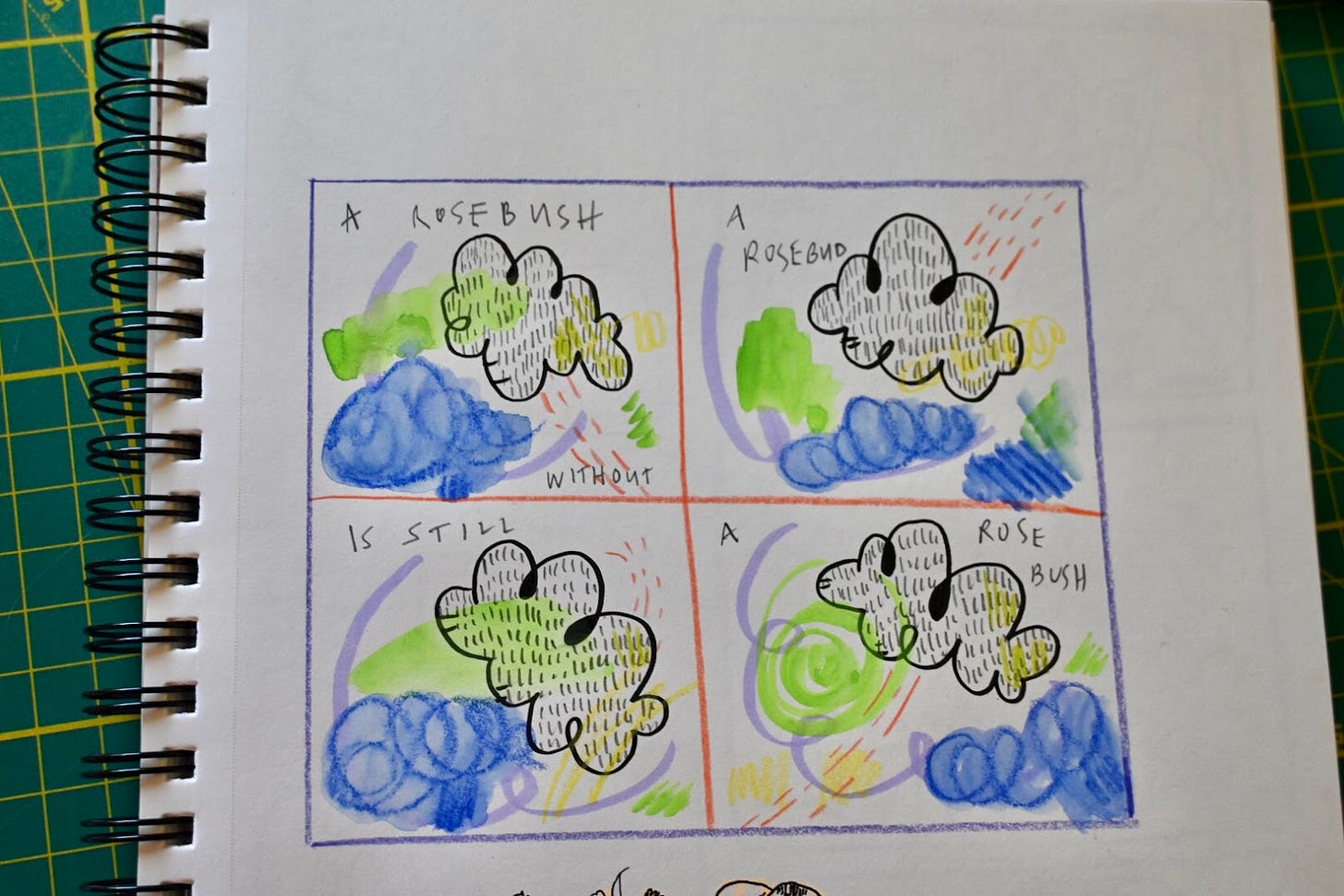Ink and Insight
A Review of The Rose Metal Press Field Guide to Graphic Literature: Artists and Writers on Creating Graphic Narratives, Poetry Comics, and Literary Collage
From poetry comics to graphic narrative to literary collage, graphic literature’s fusion of media offers a landscape of possibilities for storytelling that is equally alluring to creators and readers. As the medium expands and diversifies, it becomes increasingly vital to have resources that guide this exploration. Offering a remarkable contribution to this need, the just-released The Rose Metal Press Field Guide to Graphic Literature: Artists and Writers on Creating Graphic Narratives, Poetry Comics, and Literary Collage, is a timely compendium of practical advice, engaging exercises, and rich examples from twenty-eight of the most innovative graphic literature artists today.
This book, the fourth volume in the Field Guide series, is edited by Kelcey Ervick and Tom Hart, both seasoned veterans in the realm of graphic literature and educators in their respective rights. With the breadth of experiences shared in this anthology, it promises to appeal to both those new to this expressive medium and seasoned practitioners seeking to broaden their horizons.
Ervick right away defines graphic literature as a hybrid medium, meaning “the images are an integral, and not merely illustrative component. That is, removing images or words would change both the meaning and experience of the work.” She goes on to note that literature is experienced temporally, while visual arts are experienced spatially–this creates a multi-dimensional reading of graphic literature, from cartoons to collage. The craft essays, exercises, and examples that follow explore this range of graphic literature.
And, as you read and work through the essays and exercises, it becomes clear that this book isn’t like other “how to’s” or comic guides you may have experienced before–it is a work that truly champions and explores the possibilities of comics when they are paired with other genres and movements, like poetry, surrealism, eco-writing, schematics, taxonomies, and more. Reading the book can be a heady venture, each essay brimming with both fresh perspectives and weighty references. That’s part of what makes the structure so appealing–the sections of essays allow for selective immersion depending on what you might want to explore, whether it be using archival materials, creating characters, or stripping it all away to focus on the line.
The essays vary from personal writing about a creator’s experience with graphic literature or working on a specific piece to ones that analyzed a feature of craft. In “Capturing the Light,” Thi Bui walks the audience through researching place by visiting Vietnam, primary and secondary sources, and oral histories when working on The Best We Could Do. This essay would be a great companion piece to the graphic memoir to enrich class discussions. David Dodd Lee’s fragmented essay, “Controlled Chaos,” is likewise grounded in his personal experience of collaging, offering advice and analysis along the way.
Some of the notable craft essays include Marnie Galloway’s “The Problem of the Page,” Aidan Koch’s “The Fragmented Narrative,” Arwen Donahue’s “A Geography of Comics,” and Mira Jacob’s “Dialogue.” Galloway dives into panel layout, thinking about spreads, and designing the reader’s experience. Koch discusses how to use fragmentation and abstract imagery effectively by establishing relational contexts. Donahue’s essay expands a metaphor between the verbal and visual layering of comics to the geology and ecology of the Earth. Jacob’s is a handy primer on writing what goes inside speech bubbles.
We tried our hand at several of the exercises. Like many good prompts, the results surprised us, taking us outside of our regular modes of creation. A note to consider when embarking on these artistic excursions is that some require a lot more material and equipment than others (such as inks, brushes, digital pens and scanners). Also, some assume their audience is already well-versed in comics or graphic literature, so these may prove more difficult for beginners.
In addition to the essays and exercises, each artist has contributed examples of their work. These feel most successful when they are tied in with the essay and exercise, working as an example of how the reader might better understand the artist’s craft or approach the prompt.
Overall, this collection will enliven classrooms or one’s personal creative space. It’s an ideal way to spend time with some of the most interesting and innovative creators working today. With essays and exercises from twenty-eight of the leading figures of graphic literature, the book offers not only practical insights into the craft but also explorations of the limitless storytelling possibilities when the visual and the verbal are woven together.









This is fantastic, I'm so happy to see you working on the exercises. Hurray, thanks Amaris! I love comics so much!
I'm incredibly excited for this book! Thanks for your well-crafted and researched review!